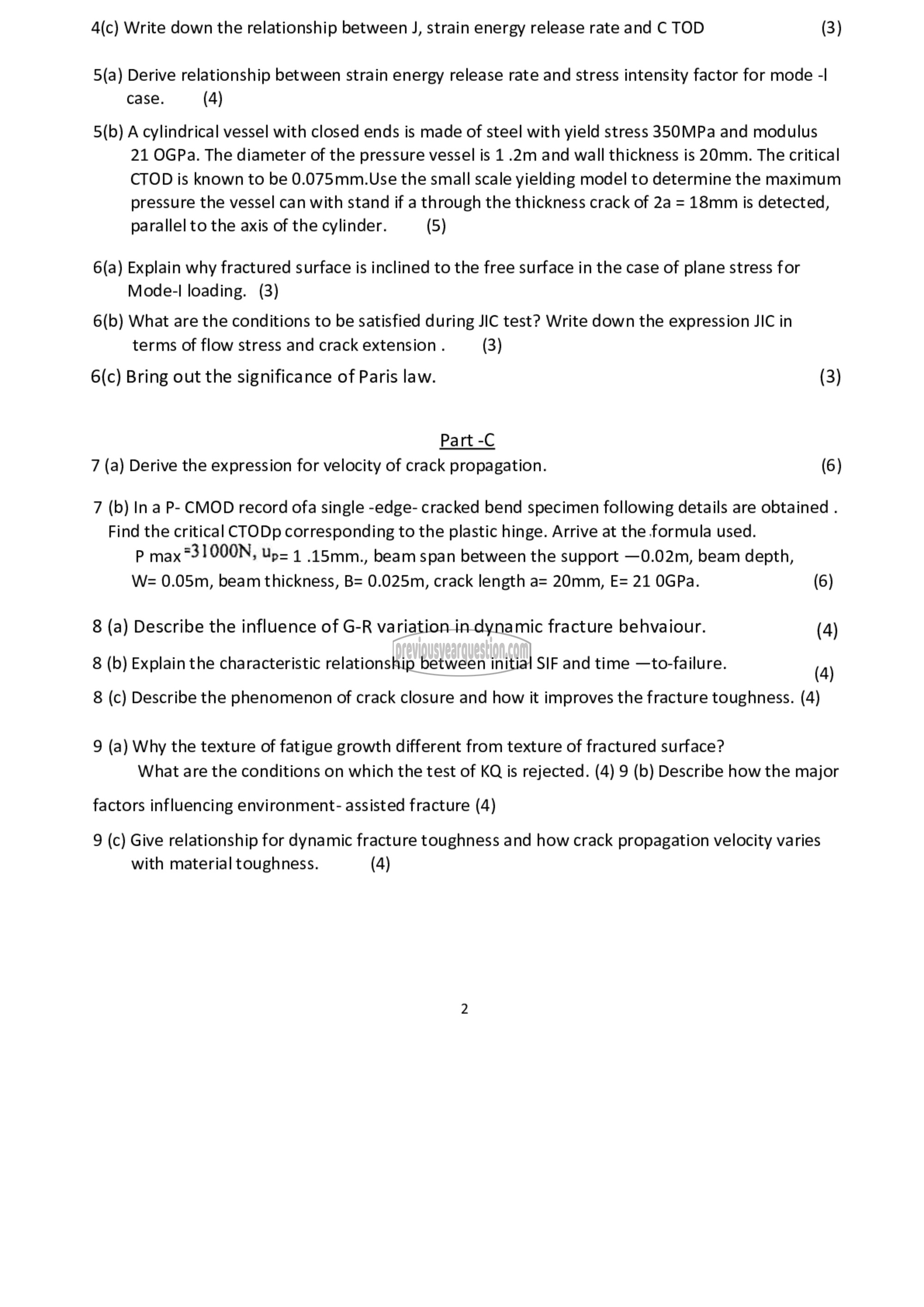APJ ABDUL KALAM TECHNOLOGICAL UNIVERSITY Previous Years Question Paper & Answer
Semester : SEMESTER 2
Subject : Fracture Mechanics
Year : 2018
Term : JULY
Branch : MACHINE DESIGN
Scheme : 2015 Full Time
Course Code : 01 ME 6110
Page:2
4(c) Write down the relationship between J, strain energy release rate and C TOD (3)
5(a) Derive relationship between strain energy release rate and stress intensity factor for mode -|
case. (4)
5(b) A cylindrical vessel with closed ends is made of steel with yield stress 350MPa and modulus
21 0679. The diameter of the pressure vessel is 1.2m and wall thickness is 20mm. The critical
CTOD is known to be 0.075mm.Use the small scale yielding model to determine the maximum
pressure the vessel can with stand if a through the thickness crack of 2a = 18mm is detected,
parallel to the axis of the cylinder. (5)
6(a) Explain why fractured surface is inclined to the free surface in the case of plane stress for
Mode-l| loading. (3)
6(b) What are the conditions to be satisfied during JIC test? Write down the expression JIC in
terms of flow stress and crack extension . (3)
6(c) Bring out the significance of Paris law. (3)
Part -C
7 (a) Derive the expression for velocity of crack propagation. (6)
7 (b) Ina P- CMOD record ofa single -edge- cracked bend specimen following details are obtained .
Find the critical CTODp corresponding to the plastic hinge. Arrive at the formula used.
م max =3 10004, up= 1 .15mm., beam span between the support —0.02m, beam depth,
دللا 0.05m, beam thickness, B= 0.025m, crack length a= 20mm, £= 21 0678. (6)
8 (a) Describe the influence of G-R variation in dynamic fracture behvaiour. (4)
8 (b) Explain the characteristic relationship between initial SIF and time —to-failure.
(4)
8 (c) Describe the phenomenon of crack closure and how it improves the fracture toughness. (4)
9 (a) Why the texture of fatigue growth different from texture of fractured surface?
What are the conditions on which the test of KQ is rejected. (4) 9 (b) Describe how the major
factors influencing environment- assisted fracture (4)
9 (c) Give relationship for dynamic fracture toughness and how crack propagation velocity varies
with material toughness. (4)
